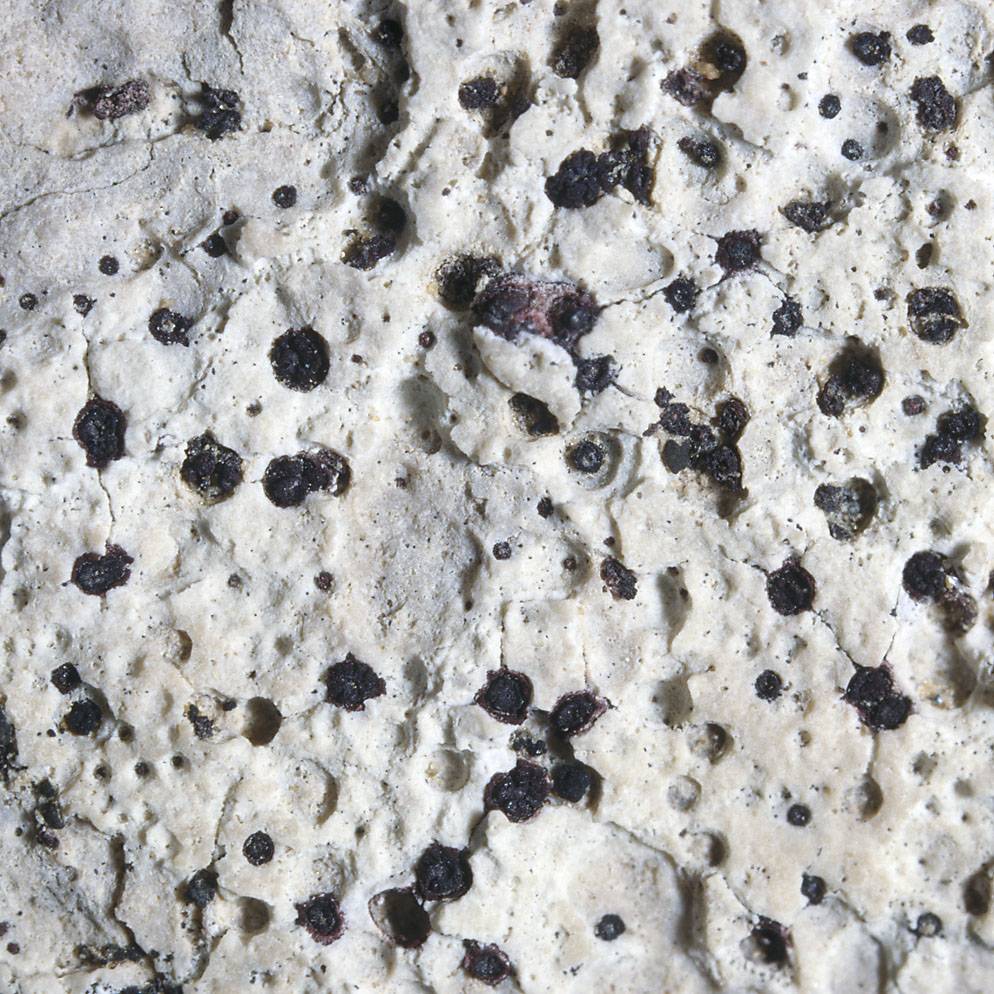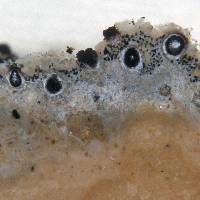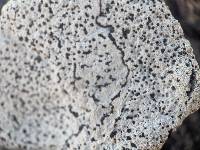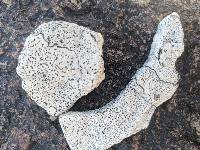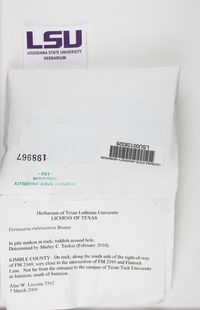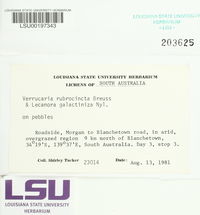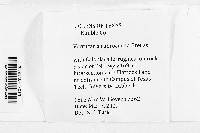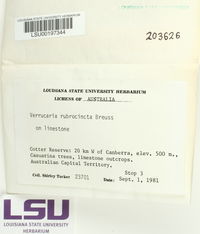
Consortium of Lichen Herbaria
- building a Global Consortium of Bryophytes and Lichens as keystones of cryptobiotic communities -
- Home
- Search
- Images
- Species Checklists
- US States: O-Z >
- US National Parks
- Central America
- South America
- US National Parks
- Southern Subpolar Region
|
|
|
|
Family: Verrucariaceae
[Verrucaria rubrocincta Breuss] |
Nash, T.H., Ryan, B.D., Gries, C., Bungartz, F., (eds.) 2007. Lichen Flora of the Greater Sonoran Desert Region. Vol 3. Thallus: indistinct, appearing as a whitish or very pale pinkish (when wet) discoloring of the rock surface anatomy: lacking an upper cortex or epinecral layer, surface layer with many fine-grained mineral particles or crystals, 50-100 µm thick, almost devoid of hyphae; algal laye: below the weathered rock surface, 30-100 µm deep, irregular, with algal cells 10-18 µm in diam. in clusters; medulla (pseudomedulla): composed of filamentous hyphae penetrating the disintegrated rock up to several millimeters depth gradually merging with the uninhabited substrate below Perithecia: almost entirely immersed in pits of the rock with only the tips showing, leaving empty cavities when they fall out, ostiolum surrounded by a diffuse red stain, red pigment cover also within the surrounding pit; exciple: subglobose to broadly pyriform, 0.25-0.35 mm wide, colorless, c. 20 µm thick; involucrellum: covering the upper half of the perithecium, appressed to the exciple, 20-30 µm thick, the outer flanks covered by red pigment; periphyses 25-30 µm long, simple asci: clavate, 8-spored ascospores: hyaline, simple, ellipsoid, 25-32 x 11-13 µm Pycnidia: unknown Spot tests: all negative Secondary metabolites: none detected. Substrate and ecology: entirely endolithic, in limestone, locally abundant in exposed, flat caliche plates on open desert pavements in the central Sonoran Desert World distribution: southwestern North America Sonoran distribution: Arizona. Notes: The outstanding anatomy of this species was described and illustrated in detail by Bungartz et al (2004). The main characteristics of Verrucaria rubrocincta are a completely endolithic growth, the immersed perithecia with a red pigment cover on their flanks and also within the surrounding pits, and large ascospores. Verrucaria marmorea (Scop.) Arnold differs in its distinctly superficial though thin thallus which usually has a reddish or peach-like color, the lack of an involucrellum (but uppermost part of exciple thickened and black), and somewhat smaller spores. |
|
|
|
Powered by Symbiota

